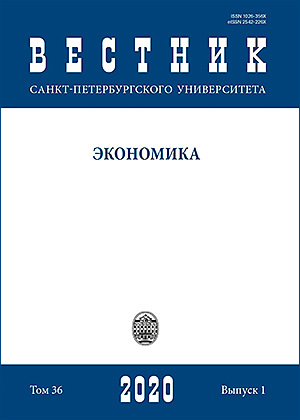Analysis of the external factors influence on the forecasting of bankruptcy of Russian companies
DOI:
https://doi.org/10.21638/spbu05.2020.106Abstract
This article analyzes factors influencing bankruptcies of Russian companies. The increase in the number of relevant cases since 2014, the beginning of which was associated with the unfolding of another financial crisis in the country that provoked a deterioration in a number of macroeconomic indicators, raises the question of establishing the dependence of bankruptcies of Russian companies on certain external factors. Based on the experience of foreign studies, in which the importance of external factors was repeatedly proved in bankruptcy prediction models, a set of variables was formed that should be included to increase predictive ability. Using an empirical base that includes 716 construction companies (340 bankruptcies), 702 manufacturing companies (339 bankruptcies), 713 trading companies (334 bankruptcies), using the binary choice models, bankruptcy prediction models were constructed, including two variable blocks: internal and external factors. External factors affecting bankruptcies of Russian companies include GDP growth, key rate, rate/increase in US dollar / euro rate, consumer price index, growth in MICEX index, and unemployment rate. The inclusion of variables characterizing external factors into the model significantly increased the explanatory capacity of the model compared to models based only on internal factors. The results can be used by companies to improve accuracy of forecasting bankruptcy probabilities, taking into account the macroeconomic context. In addition, the results of the study can be used by public authorities. Since the regulation of some of these external factors lies at the heart of the country’s monetary policy, the state has the ability to influence not only macroeconomic processes, but also the health of Russian companies.
Keywords:
forecasting of bankruptcy, external factors, state policy, insolvency of companies
Downloads
References
Chiaramonte L., Casu B. (2017) Capital and liquidity ratios and financial distress. Evidence from the European banking industry. The British Accounting Review, vol. 49, no. 2, pp. 138–161.
References in Latin Alphabet
Downloads
Published
How to Cite
Issue
Section
License
Articles of the St Petersburg University Journal of Economic Studies are open access distributed under the terms of the License Agreement with Saint Petersburg State University, which permits to the authors unrestricted distribution and self-archiving free of charge.






